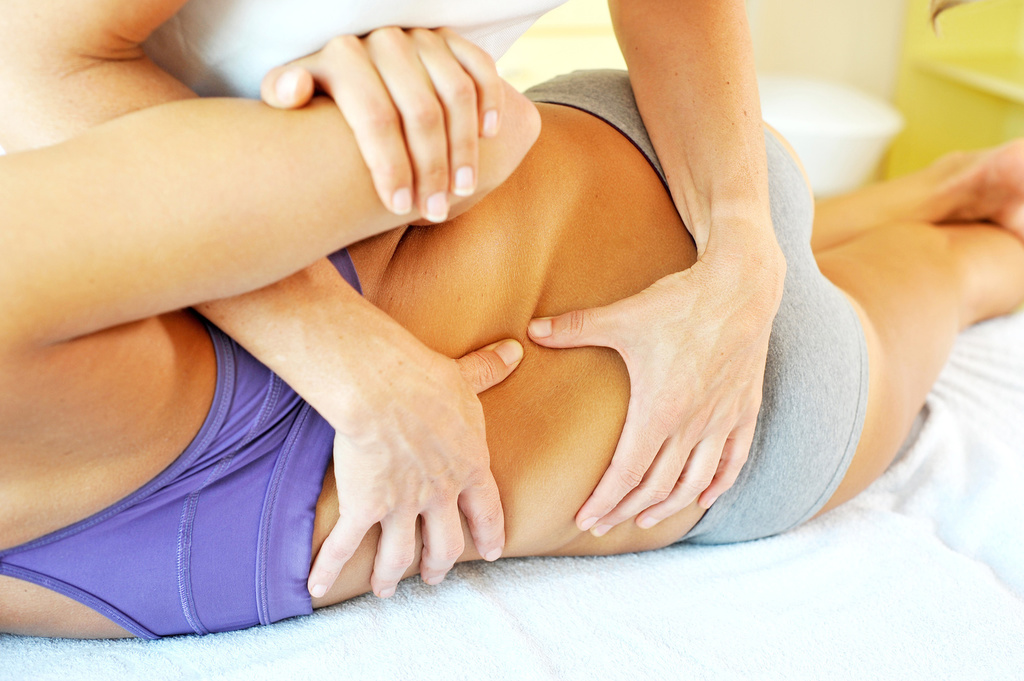Manual therapy, i.e. treating the structures of the spine and peripheral joints with the hands of a therapist in order to reduce pain, has been used for a long time. It is the most natural way of bringing relief to one person's suffering with the hands of another person, and as centuries ago, manual therapy remains one of the few areas where the therapist has direct contact with the patient, and treatment takes place without the use of pharmacological agents, complicated apparatus or also a surgical knife.
 Manual therapy deals with the examination and treatment of the so-called functional disorders in the musculoskeletal system and determining the causes that could lead to them. The main activity of manual therapy is the detection and removal of movement deficits (functional barriers) in relation to the mobility of the spine joints, intervertebral disc, peripheral joints, and the mobility of soft tissues related to the motor organ: skin, subcutaneous tissue, fascia, ligaments, joint capsules, tendons, especially muscles. The treatment and relief of pain ailments is, in a way, a consequence of restoring normal functions of the musculoskeletal system. At Vratislvia Medica, our experienced team of physiotherapists uses methods and techniques according to various concepts in their daily work with the patient, contributing to the improvement of the functional state of the musculoskeletal system, but also to the regression of symptoms. The best known methods of manual therapy include: the concept of Ackermann, Hartman, Mulligan, Kaltenborn-Evjenth or Levitt and the fascial distortion model FDM (Typaldos) manipulation.
Manual therapy deals with the examination and treatment of the so-called functional disorders in the musculoskeletal system and determining the causes that could lead to them. The main activity of manual therapy is the detection and removal of movement deficits (functional barriers) in relation to the mobility of the spine joints, intervertebral disc, peripheral joints, and the mobility of soft tissues related to the motor organ: skin, subcutaneous tissue, fascia, ligaments, joint capsules, tendons, especially muscles. The treatment and relief of pain ailments is, in a way, a consequence of restoring normal functions of the musculoskeletal system. At Vratislvia Medica, our experienced team of physiotherapists uses methods and techniques according to various concepts in their daily work with the patient, contributing to the improvement of the functional state of the musculoskeletal system, but also to the regression of symptoms. The best known methods of manual therapy include: the concept of Ackermann, Hartman, Mulligan, Kaltenborn-Evjenth or Levitt and the fascial distortion model FDM (Typaldos) manipulation.
In which conditions is manual therapy used?
- pains in the cervical, thoracic and lumbar spine radiating to the lower and upper limbs
- disc pain
- lumbago,
- „sciatica”
- „Shoulder gland”
- pain in the hips, knees and feet
- pain in the shoulders, elbows and wrists
- headaches
- chest pains: stabbing, girdling
- posture defects, including scoliosis
- painful shoulder syndrome
- post-traumatic conditions of the spine and peripheral joints
- temporomandibular joint myoarthropathies (including interarticular disc locking) - treatment in cooperation with a dentist with the use of relaxation and reposition splints, individually selected for each patient
What are the contraindications for using the method?
- advanced osteoporosis
- problems with blood clotting
- severe pain that prevents the test from being carried out
- tumors, especially bone or bone metastases
- serious disorders of the internal organs
- pregnancy
- fractures, dislocations
- real spondylolisthesis in the treatment area
- vertebrobasilar insufficiency when working on the cervical spine




